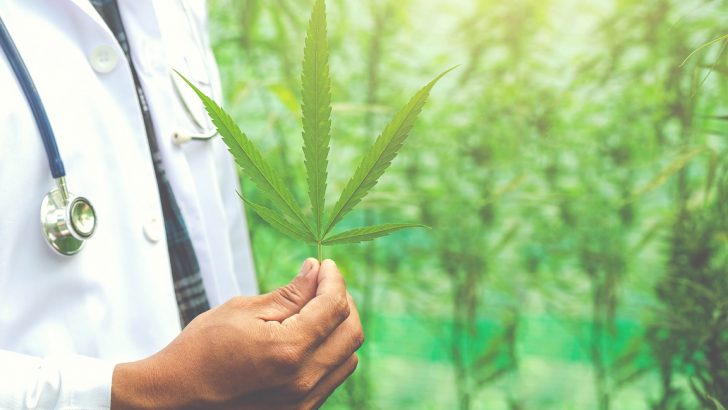Medical Matters
Last week saw the signing of new legislation that will allow for the operation of a Medical Cannabis Access Programme in Ireland. The law allows a medical consultant to prescribe cannabis-based products for patients who suffer with any one of three specified conditions. These include spasticity due to multiple sclerosis, intractable nausea due to chemotherapy and drug treatment resistant epilepsy. Of course, cannabis use has become a highly politicised issue given that it’s an illicit drug that can have several adverse health effects.
It’s important however, that the distinction be made between what is called “medical cannabis” and that which is used for other reasons.”
In fact, cannabis is the most widely used non-prescribed drug globally after alcohol and tobacco with an estimated 192 million users in 2016. Its use for medicinal purposes dates back about 3000 years though its introduction into Western medicine in 1839 was actually as a result of the Irish surgeon WB O’Shaughnessy. He conducted the first studies with cannabis while in India and reported its use as a anaesthetic and painkiller.
It’s important however, that the distinction be made between what is called “medical cannabis” and that which is used for other reasons. For medical conditions, cannabidiol (CBD) is the main constituent and can be effective for chemotherapy induced nausea with studies also suggesting it can help with pain and refractory epilepsy. On the other hand, tetrahydrocannabinol (THC) found in cannabis has mind altering effects, can cause mental health problems and is the source of concern. When it reaches the brain it also produces the “high sensation” that cannabis users get. Furthermore, levels of THC in cannabis used recreationally have increased threefold in the last few decades.
It has been argued that licensing of medical cannabis could have been done by the Health Products Regulatory Authority rather than via specific legislation. But there is also a move to consider decriminalising cannabis so that individual users would not be penalised. This might seem sensible given that an estimated 24% of people will use cannabis in their lifetime in Ireland. However, groups like the Cannabis Risk Alliance see this as slippery slope to legalisation and commercialisation of the drug.
So, what are the negative effects of using cannabis? After inhalation of cannabis, acute side effects include impaired short-term memory, altered judgement and at high doses paranoia, psychosis and impaired motor coordination. In fact, cannabis impairs driving, blood levels have been directly correlated with poorer performance and it is associated with road traffic accidents.
Smoking cannabis can cause inflammation of the airways and chronic bronchitis and though it contains carcinogens it is unclear whether it increases the risk of lung cancer.
Withdrawal symptoms can occur on stopping including irritability, sleeping difficulties, dysphoria, craving, anxiety and loss of appetite. Though these appear to be milder when compared to opioids or sedatives it can make cessation difficult and contribute to relapse.
A major and well-established concern is the finding that cannabis increases the risk of psychosis especially if started young, used frequently or where there is family history of mental illness. A study in the Lancet Psychiatry this year found that daily cannabis use trebled this risk while high potency cannabis increased the risk even further by up to five times. Other studies show than ongoing use after psychosis onset is linked to poorer disease prognosis and increased risk for relapse and hospital admission.
In particular, it is thought that cannabis may have more detrimental effects on the developing brain. For example, the risk of psychosis is greater when started in adolescence as is cognitive impairment which has been shown in some to studies to persist into adulthood. Cannabis has also been associated with the development of depression and anxiety.
Overall, about 9% of those who experiment with cannabis will become addicted. However, this rate at least doubles after the first two years of use in adolescence and rises from 25% to 50% among those who smoke it daily.
The risk of transition to ‘hard drugs’ and cancer are still debated – but cannabis use in adolescence could influence multiple addictive behaviours in adulthood. For example, THC in cannabis has been found to prime the brain for enhanced responses to other drugs.
While many cannabis users may not experience any significant adverse effects, good studies exploring long-term outcomes including the risk of cancer are lacking. However, given the extent of cannabis use it can be expected that a significant number of people are likely to suffer from negative effects.
Canada became the second country in the world to legalise cannabis in 2018 and a study this year suggests that rate of use there has increased from 14% to 18%. Prior to legalisation, a large survey identified that those who were younger, used cannabis in recent months, had higher incomes or suffered with worse mental health intended to either increase their use or try it for the first time.
While regulating supply (and potentially reducing high potency cannabis use) it may also lead to an overall increase in the number of users and thereby potential health problems, while not eliminating black market sales. It all makes for careful ‘food for thought’ for our legislators.


 Dr Kevin McCarroll
Dr Kevin McCarroll
